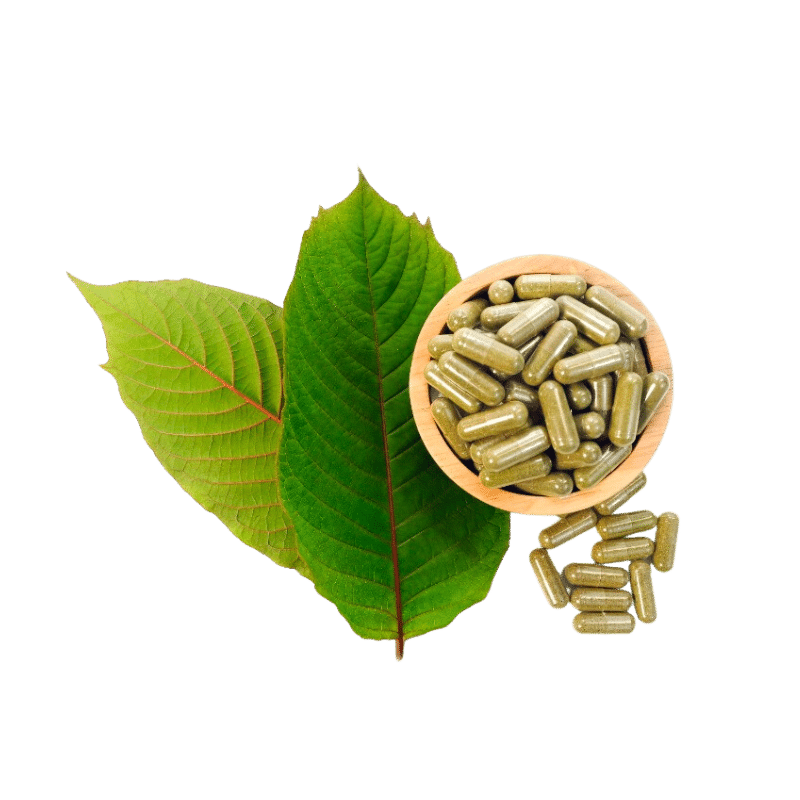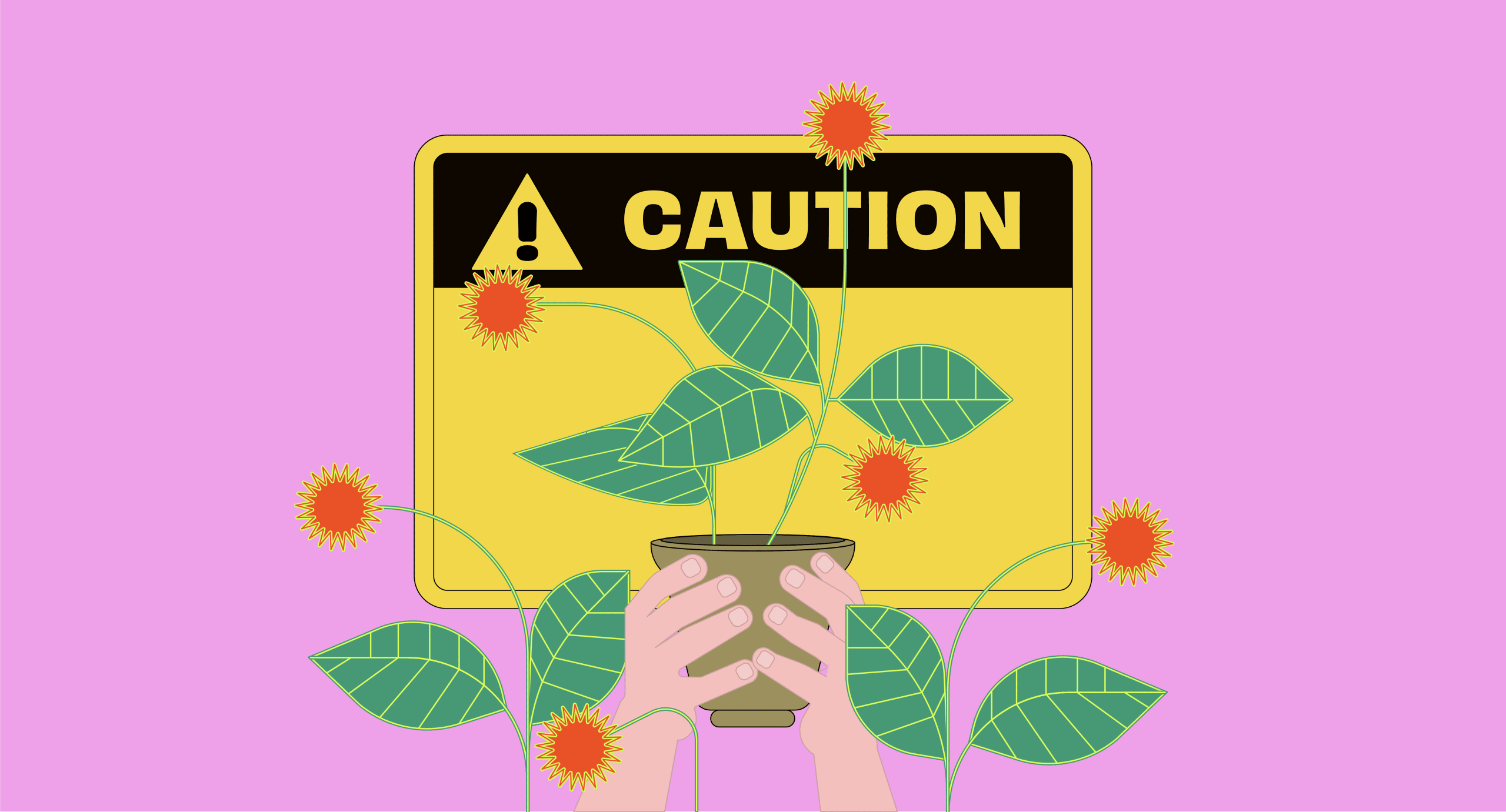Kratom has gained worldwide popularity for its stimulating and relaxing effects, but few people know about its addictive potential and the symptoms that follow it.
We’ll talk about kratom dependence, the withdrawal period, its symptoms, and — perhaps most importantly — how to overcome them effectively and with minimal discomfort.
Related: What’s the Difference Between Kratom & Opiate Withdrawal Symptoms?
Kratom Dependence & Withdrawal Symptoms
Undoubtedly, kratom is addictive — though it isn’t as harmful as other substances can be. Still, that doesn’t make it any less significant. If you don’t use it responsibly, you can become dependent.

We can split addiction into two stages: psychological and physical dependence — both can lead to kratom withdrawal. These symptoms are mild compared to those from opioid withdrawal, but you might still feel terrible as you go through them.
Psychological Dependence & Withdrawal Symptoms
As with other addictions, you first crave kratom’s effects. You get accustomed to the sensations and seek your next dose because of it. Note that the body still doesn’t depend on the substance.
Kratom withdrawal for psychological addiction generally leads to the following:
- Agitation
- Anxiety
- Depression
- Irritation
- Mood changes
Physical Dependence & Withdrawal Symptoms
At this point, the dependence is so bad that you feel physically sick when you don’t get a dose. This stage happens after several months of kratom abuse, and the body has assumed kratom is necessary for normal functioning — the so-called homeostasis.
The typical physical symptoms of kratom withdrawal include:
- Diarrhea
- Nausea
- Vomiting
- Muscular pain
- Insomnia
- Blurred vision
- Abdominal pain
- Decreased appetite
- Fever
- Sweating
- Runny nose
- Watery eyes

Additionally, keep in mind that many of these symptoms also appear as a side effect of kratom use, especially with larger doses.
Other Warning Signs of Kratom Addiction
There are many signs of a kratom addiction. If you notice any of these behaviors in yourself or a known user, take action as soon as possible.
- Having little interest in socializing or doing everyday tasks
- Using kratom despite life issues or negative consequences
- Being unable to stop using kratom despite wanting to
- Spending excessive sums of money on kratom
- Having trouble managing doses
- Eating or sleeping changes
- Lying about using kratom or keeping it a secret
- Having a constant craving for kratom that interferes with daily life
How Long Does Kratom Withdrawal Last?
Generally, it lasts a week, but it can change depending on the person’s health, the severity of the addiction, and more. Based on user reports, we have identified three distinct phases of withdrawal, which we’ll summarize here.
Phase 1
The first phase lasts 48 hours and begins about 6 hours after feeling kratom’s effects on the body. During this phase, the symptoms worsen as the body eliminates the alkaloids, and you may have trouble sleeping.
Phase 2
The second phase goes from day 2 to day 4, and you’ll experience the symptoms at their peak before subsiding. At this point, the craving for kratom will be most intense, so do your best not to give up.
Phase 3
The third and final phase lasts from days 5 through 14 and will begin with the symptoms becoming milder. As the days pass, you’ll have more energy, and the cravings will become less intense. By day 14, kratom withdrawal will most certainly be over.
Tips for Reducing Symptoms of Kratom Withdrawal
Going through kratom withdrawal won’t be comfortable, but it won’t last long. Our article on tapering off kratom can help you break your addiction.
Here are tips on how to reduce your withdrawal symptoms, giving you the best chance at succeeding.
1. Stay Hydrated
Some of the side effects of kratom withdrawal can include diarrhea and vomiting. These can quickly dehydrate you, so keep your hydration and electrolytes up by drinking plenty of water.

2. Take OTC Pain Medication
You may experience a fever or muscle aches during the withdrawal process. Some people will use over-the-counter medications such as ibuprofen, acetaminophen, or aspirin to relieve these symptoms and reduce the chances of relapsing on kratom. Be careful when combining pain medications with kratom if you’re tapering off it slowly.
3. Eat Frequent but Small Meals
Stick to a bland diet and eat frequent but small meals. This may ease some of the stomach discomfort.

4. Take An OTC Antidiarrheal
You can use an over-the-counter medication like bismuth subsalicylate (Pepto Bismol) to help ease stomach discomfort and stop diarrhea.
The more you can do to reduce your most uncomfortable symptoms without turning to kratom or opiates, the higher your chances of sticking it out to the end and quitting kratom successfully.
5. Take An OTC Antiemetic
If you’re suffering from vomiting or nausea, try taking bismuth subsalicylate (the same used for diarrhea) or make a strong ginger or peppermint tea.
6. Sleep When Needed
You may feel anxious or irritable. If you get a full night’s sleep and nap during the daytime as needed, it should help alleviate these symptoms.
When quitting kratom, it’s a good idea to schedule some time off work for the first four days (at least). If this isn’t possible, avoid doing extraneous activities during this time, and try to avoid adding anything extra to your schedule.

You should spend as much of your time sleeping as possible. This will speed up the recovery process and shorten the number of days you have to endure symptoms.
7. Engage Your Mind
Doing things that you enjoy can keep your mind engaged as you go through withdrawal. Keep things you enjoy on hand, including puzzles, music, movies, and books.
8. Use Relaxation Techniques
Yoga, meditation, and breathing exercises are a few of the many techniques that will help with insomnia, anxiety, and pain.

9. Talk to a Friend or Counselor
Talk to someone you trust about how you’re feeling. Socializing is one of the easiest and most effective ways of releasing endorphins, the body’s natural version of opiates. These endorphins may help reduce the severity of the withdrawal symptoms.
When to See a Doctor
As the kratom withdrawal period isn’t as severe as that of opioid substances, it’s possible to go through the process safely at home, even alone. However, if you find the symptoms too challenging to bear or want additional support, don’t hesitate to contact a professional.

After detox, you’ll still need to find ways to avoid relapsing. Many methods can help, such as therapy or even aftercare programs. These will give you strategies and resources to have a normal life without worrying about addiction again.
What Is Kratom?
Kratom (Mitragyna speciosa) is an herbal extract native to the tropical forests of Southeast Asia. Traditionally, locals used it to relieve pain, but now people also use it to boost mood and energy, as well as manage anxiety or just relax after a hard day.
As this is an organic psychoactive substance, many of its active components are alkaloids. Mitragynine, 7-hydroxymitragynine, speciociliatine, speciogynine, paynantheine, and corynantheidine are the most important.

These alkaloids interact with the opioid receptors and are responsible for kratom’s extraordinary effects, such as alleviating pain or boosting mood. However, overuse produces chemical imbalances, which lead to dependency and addiction.
Effects of Kratom
Kratom provides many different effects, depending on the dosage and the strain. While there’s little clinical data to back these benefits, anecdotal reports from users conclude that there’s a high chance they may be true.
One of kratom’s most prevalent uses is as a pain reliever. By stimulating the opioid receptors and inhibiting the COX-2 enzyme, the pain signal loses intensity. Additionally, it alleviates muscle pain and tension.

Many kratom strains also induce sleep and help with insomnia; 7-hydroxymitragynine is the main one responsible for sedation. Red vein strains are best for sleep and pain.
Another effect people seek is boosting mood, energy, and focus. Once again, kratom’s active components act on the nervous system, this time on the noradrenaline system. This stimulation provides an energy boost that lasts several hours, depending on the strain. White strains help most for these purposes.
While kratom isn’t a cure for depression and anxiety, it can be helpful to manage them. The alkaloids 7-hydroxymitragynine and speciogynine block a compound called glutamate, which stimulates electrical brain activity. By reducing glutamate levels, the brain relaxes.
When considering what kratom feels like, we can find some general similarities. A low dose leads to an energy burst — and likely euphoria — that can last several hours. On the other hand, a higher one usually provides a sedative effect, along with the particular strain’s effects.
Related: Kratom Dosage Guide
How Is Kratom Used?
People can find kratom in many formats, but powder, capsules, and tinctures are the most prevalent.
Kratom powder comes from the crushing of dried tree leaves. It’s a cheap process, and the end product is convenient for transport, measuring, and use. On the other hand, it is very bitter, so many users have developed ways to make it easier to take.

The capsules are simple gelatin shells that contain a dose of powdered kratom determined by the manufacturer. They can be more expensive than powder and less convenient to reach your dosage, but they are tasteless and easy to take.
Tinctures are more tasteful and potent than powder, but they also cost more. In this case, alcohol dissolves the leaves or powder, giving the product its liquid form. No matter which format you use or prefer, you’ll experience the same effects.
Conclusion: How to Know If You’re Going Through Kratom Withdrawal
Though unlikely, it’s possible to develop dependence or addiction to kratom, and withdrawing its usage leads to many symptoms ranging from mild to severe. Generally, they last for a week, but that can change depending on several variables.
Anything in excess can be harmful; this herb isn’t the exception. Still, kratom is entirely safe in moderation, and as long as you use it responsibly, you will be perfectly okay. Likely, you’ll never develop dependence or tolerance at all.
Finally, remember that there are ways to overcome withdrawal and even avoid relapsing afterward if it happens. Never hesitate to look for help if you need it.









